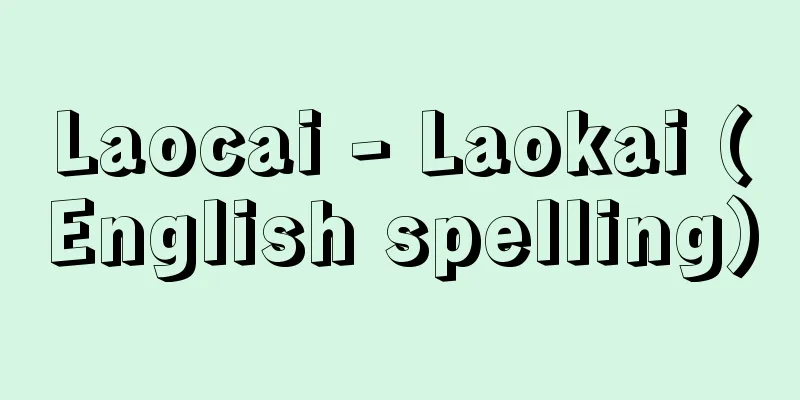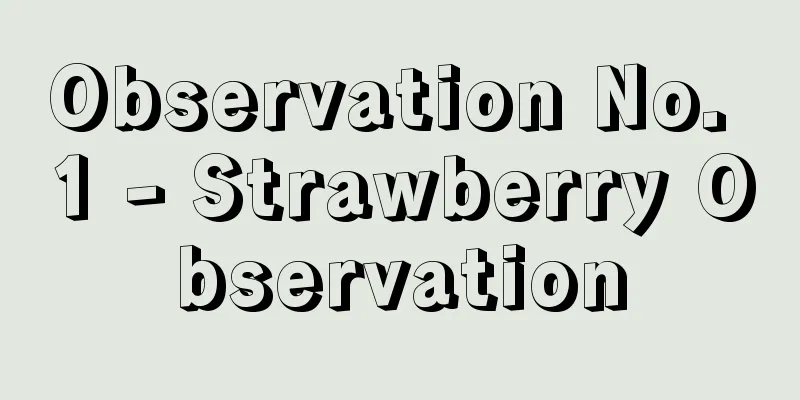Buildings - Vehicles

|
A concept in administrative law, it refers to the totality of human and material facilities that an administrative body continuously uses for a specific public purpose. There are public facilities that are directly used by residents (postal services before privatization, public schools, public libraries, public museums, public hospitals, water and sewerage systems, the Japan Highway Public Corporation before privatization, telegraph and telephone systems before privatization, railways, etc.), and public facilities that are used exclusively for administrative bodies (public offices, research institutes, prisons, observatories, testing centers, etc.). The term "facilities" is not used in a unified manner in both academic and positive law, and is also used to refer to physical facilities that an administrative body such as the state or a public organization uses for a specific public purpose, such as roads and rivers (Articles 2 and 3 of the State Compensation Act), and to human and material means that an administrative body continuously uses for the general public (public facilities as defined in Article 244 of the Local Autonomy Act). Sometimes the concept of public enterprises is used instead of facilities. In addition, with the progress of privatization, there is a tendency for organizations that were designated as public facilities to be transferred to private companies (such as the Japan Highway Public Corporation and the postal service). [Yasuhito Abe] Types of facilitiesThere is a distinction between facilities that are: (1) independent facilities with legal personality (such as independent administrative agencies and incorporated national and public universities) and non-independent facilities without legal personality (such as public schools and public museums); (2) government-operated facilities managed by the national government (such as the postal service before privatization, and national schools and hospitals before they were incorporated as independent administrative agencies); public facilities managed by local governments (elementary, middle and high schools, markets, municipal and prefectural roads) and government-operated publicly funded facilities managed by the national government at the financial expense of the local government (national highways and parts of rivers); and (3) monopoly facilities over which the national government has a monopoly on management (such as the postal service before privatization) and non-monopoly facilities over which it does not. The use of facilities is determined by laws and regulations, as well as legal norms enacted within the administration, such as public notices, instructions, and business manuals. Facilities managers may be granted the power to give orders and discipline users. Unless there are special provisions, it is generally understood that private law provisions apply. [Yasuhito Abe] [Reference items] | |Source: Shogakukan Encyclopedia Nipponica About Encyclopedia Nipponica Information | Legend |
|
行政法学上の概念で、行政主体が特定の公の目的に継続的に供用する人的および物的施設の総合体をいう。住民の直接利用に供される公共用営造物(民営化前の郵便、公立学校、公立図書館、公立博物館、公立病院、上下水道、民営化前の道路公団、民営化前の電信・電話、鉄道など)と、もっぱら行政主体の用に供される公用営造物(官公署、研究所、刑務所、天文台、試験場など)がある。「営造物」の語は、学問上も実定法上も用法が不統一で、このほかにも、国または公共団体等の行政主体が特定の公の目的に供用する物的施設、たとえば道路、河川をさす用法(国家賠償法2条、3条)、行政主体が継続的に一般公衆の使用に供用する人的手段および物的手段をさす用法(地方自治法244条にいう公の施設)がある。営造物のかわりに公企業の観念が用いられることもある。 また、民営化の進展により、営造物とされた組織が民間会社に移行する傾向にある(道路公団、郵便事業など)。 [阿部泰隆] 営造物の種類営造物には、(1)法人格を有する独立営造物(たとえば独立行政法人や法人化された国公立大学など)と、法人格を有しない非独立営造物(公立学校、公立博物館など)、(2)国が管理する官営営造物(民営化前の郵便、独立行政法人化前の国立の学校・病院など)と、地方公共団体が管理する公営営造物(小・中・高校、市場、市町村・都道府県道)および地方公共団体の経済的負担において国の管理する官営公費営造物(国道、河川の一部)、(3)国が経営につき独占権を有する独占営造物(民営化前の郵便など)と、そうでない非独占営造物、という区別がある。 営造物の利用関係は、法令のほか、告示、訓令、業務方法書など行政内部で制定する法規範により定められている。営造物管理者には、利用者に対する命令、懲戒権が認められることがある。特別の規定がない限りは私法規定の適用があると解されるのが普通である。 [阿部泰隆] [参照項目] | |出典 小学館 日本大百科全書(ニッポニカ)日本大百科全書(ニッポニカ)について 情報 | 凡例 |
<<: Construction method - Construction method
Recommend
Nabis apicalis
…[Hasegawa Jin]. … *Some of the terminology expla...
Türkeş, A. (English spelling) TurkesA
...During the 1960s, amid the free development of...
Durable consumer goods
Among goods that directly satisfy human desires, i...
"Araki's Tale of Bravery" - Araki's Tale of Bravery
…This story, along with the Soga brothers and the...
Kintenjo
…A painter from the mid-Joseon period in Korea. H...
Shoshidai - Shoshidai
〘Noun〙① A job title in the Muromachi shogunate. An...
Liberius
[raw]? Died September 24, 366. Pope of the Roman E...
Thomas de Cantimpré (English spelling)
In the late 10th century, a group of intellectual...
Latona
In Greek mythology, she was the mother of the twi...
Rotten City - Rotten City
〘 noun 〙① A market where waste and junk are bought...
Jordan's curve theorem
...This property holds for any figure in the plan...
MacSpaunday
…While studying at Oxford, he advocated a new lit...
Okawa (formerly Yodo River) - Okawa
…A river that flows from east to west through the...
Evans-Benz, WY
...A Tibetan esoteric text. It is commonly called...
Supervision - Kenmotsu
〘 noun 〙 Under the Ritsuryo system, an official po...









